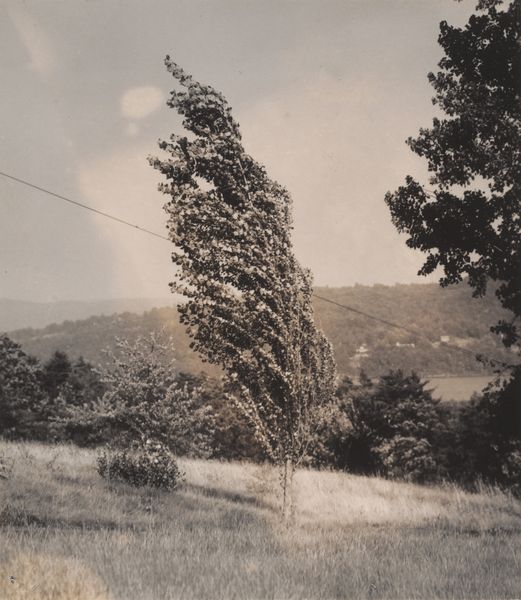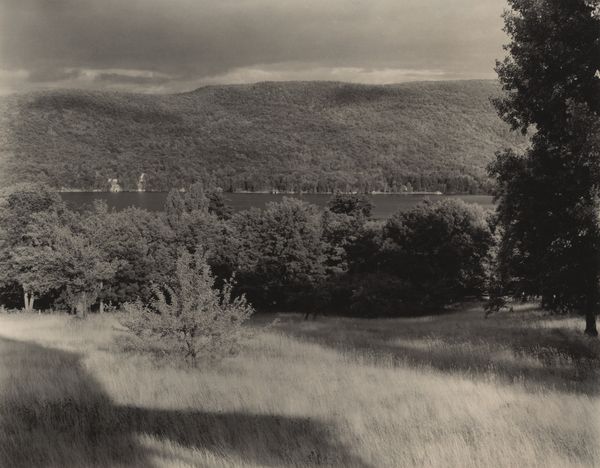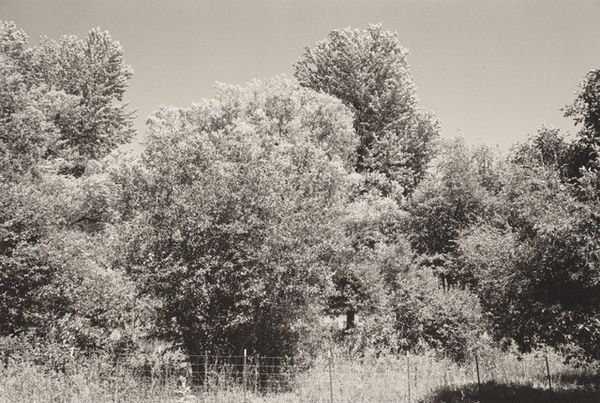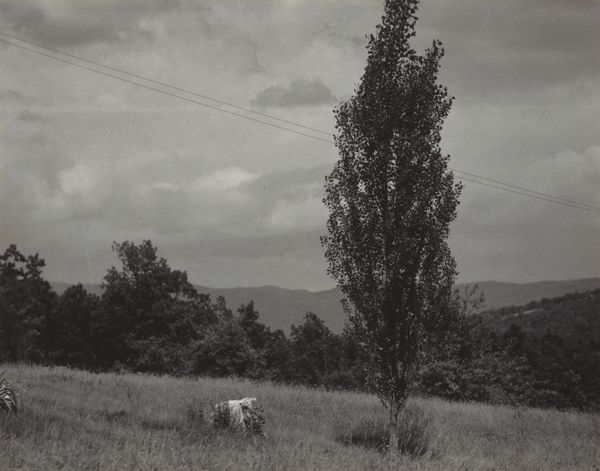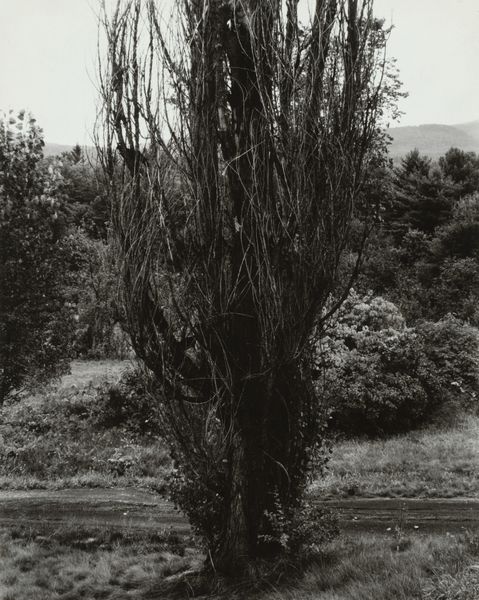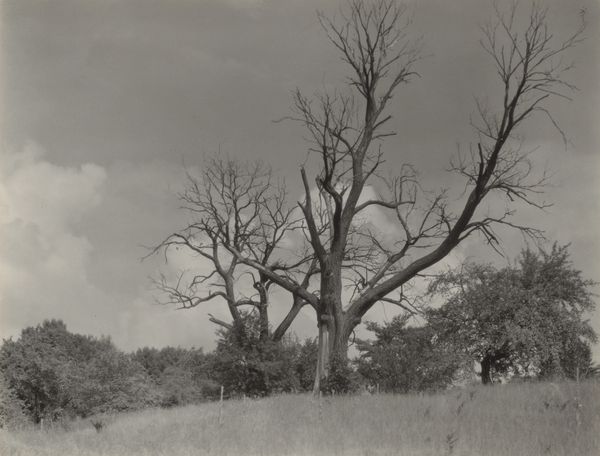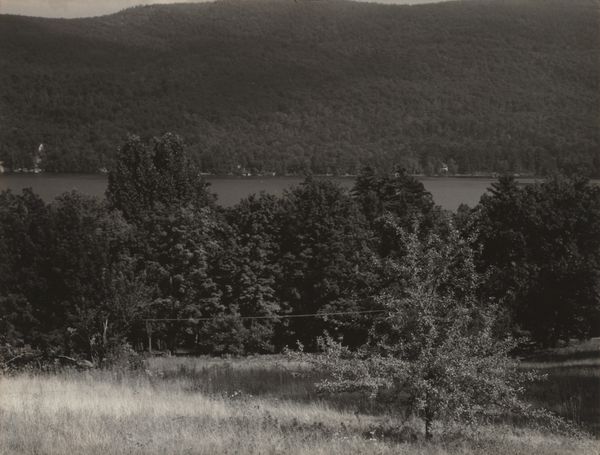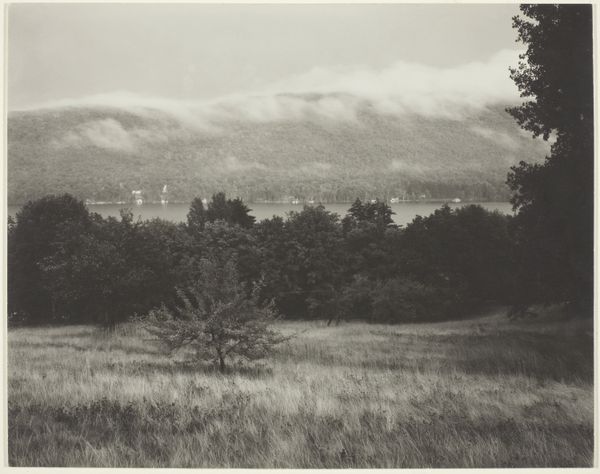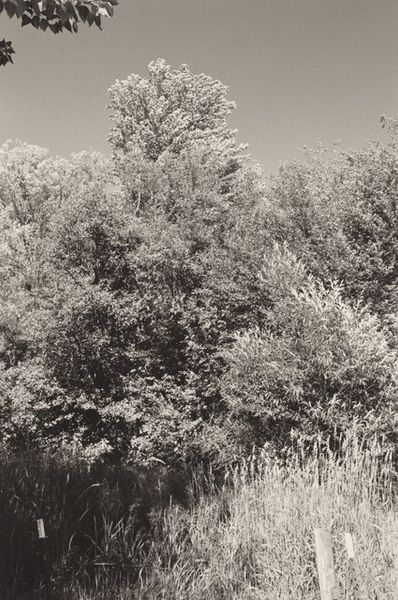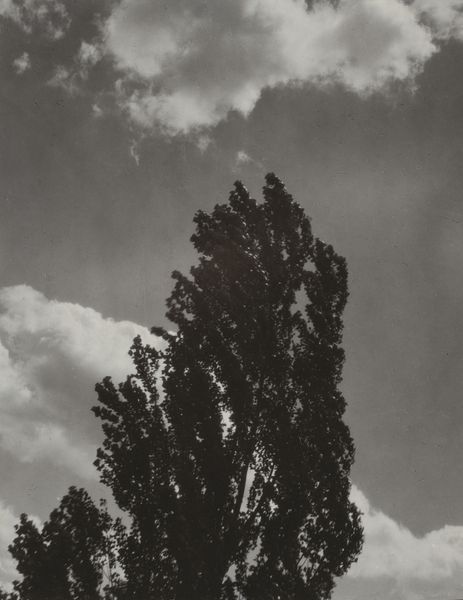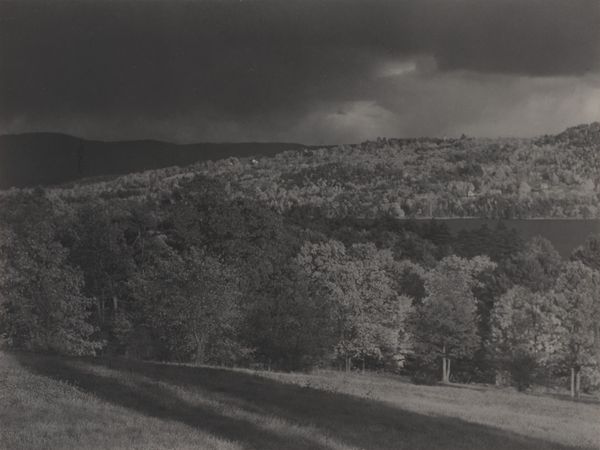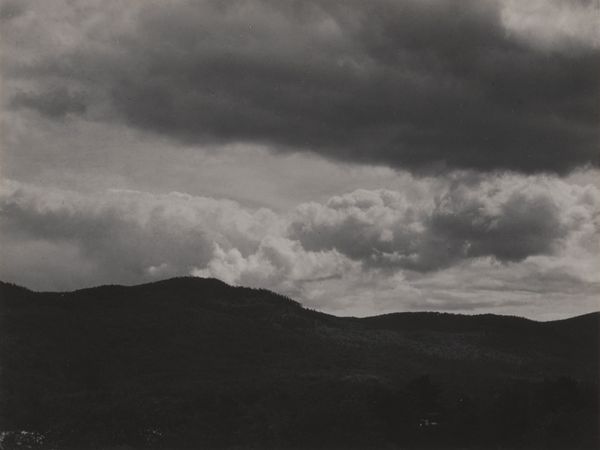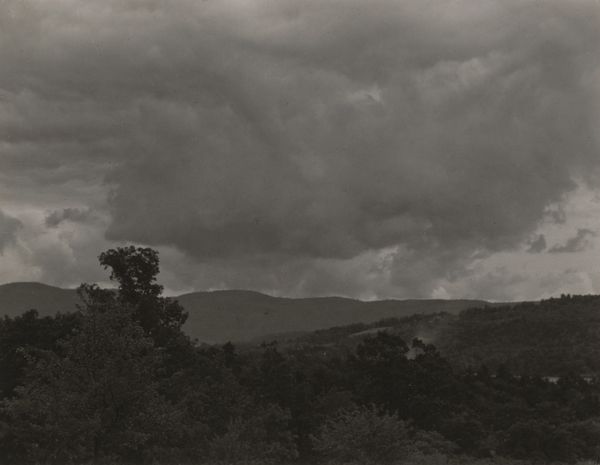
Dimensions: sheet (trimmed to image): 11.6 × 9.1 cm (4 9/16 × 3 9/16 in.) mount: 34.9 × 27.3 cm (13 3/4 × 10 3/4 in.)
Copyright: National Gallery of Art: CC0 1.0
Editor: Alfred Stieglitz captured this black and white photograph, “Poplar—Lake George,” in 1937. There’s a beautiful, almost mournful quality to this lonely tree, bending in what must be a very strong wind. How do you read this piece? Curator: Considering the socio-political context, it’s hard not to view this landscape through the lens of the late 1930s. The Dust Bowl, the looming shadow of World War II… The bending tree, isolated against the cloudy sky, becomes a powerful symbol of resilience, perhaps even defiance, in the face of adversity. Editor: Defiance? That’s an interesting take. I was leaning more towards vulnerability. Curator: Vulnerability is definitely present, but remember Stieglitz was deeply involved in debates about the artistic status of photography. Was he, through this isolated tree, perhaps also asserting the photographer’s agency? He chose this scene, this light, this precise moment. He controls the narrative. Is the power line interrupting the nature intentionally? What public meaning did it create at that time? Editor: I didn't think about it that way at all. You are right about him being assertive though; it also sounds like it created very complex meanings around landscape and its representation. How much do you think Stieglitz's personal life influenced these types of artistic choices? Curator: Undoubtedly, his relationship with Georgia O'Keeffe shaped his artistic vision. Their intertwined careers, their public image… It all contributed to how his work was received, and continues to be interpreted, within the larger art world and society. But these photographic landscapes are rarely examined in connection with this biographical fact, so what if we opened a new discussion around that connection? Editor: That's something to consider. Thanks for this eye-opening take on Stieglitz and how the environment can really shape the perception of art. Curator: My pleasure. Remember, art rarely exists in a vacuum. Considering the world around it often unlocks deeper meanings.
Comments
No comments
Be the first to comment and join the conversation on the ultimate creative platform.
